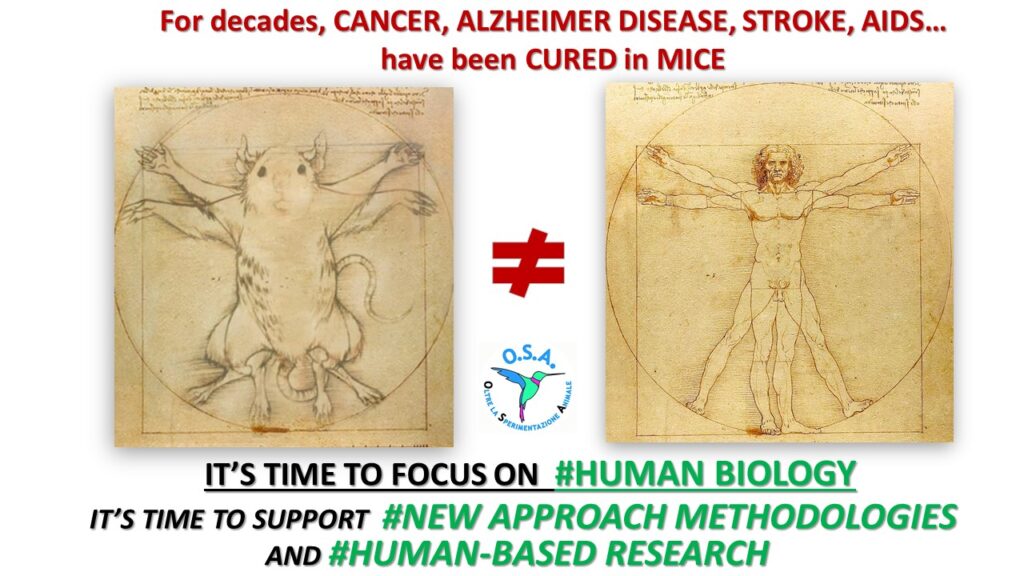
The primary goal of OSA is to promote a scientifically valid and ethically sustainable approach to research.
The main objectives of OSA are:
- To contribute, along with other associations sharing this primary goal, to the promotion and dissemination of human-based and human-relevant new approach methodologies (NAM) for biomedical research, such as alternative and replacement methods to animal experimentation, in line with the concepts underlying 21st-century toxicology and research, respecting humans, the environment, and animals;
- To positively contribute to public debate on the scientific and methodological challenges of traditional research approaches (both in vivo and in vitro), by organizing conferences, meetings, symposiums, and any other public forum for discussion on the topic, beneficial for scientific dissemination;
- To inform the public about advancements in medical-scientific research employing human-based and human-relevant NAMs, through publications, management of online information channels, purchase of advertising space, and any other useful means;
- To provide scientific contributions on relevant topics (studies, publication of articles in international scientific journals, presentation of posters, participation in scientific seminars, etc.), also in collaboration with other associations, entities, and institutions;
- To advocate for the mandatory inclusion of human-based and human-relevant NAMs (alternatives and replacements to animal experimentation) in university education;
- To advocate for the mandatory use of alternative and replacement methodologies where they are already available and accessible;
- To establish a national day for animal-free scientific research and manage related information and awareness initiatives;
- To actively work towards making the donation of tissues for research, both in vivo and post mortem, feasible;
- To raise funds necessary to pursue the aforementioned objectives and to finance scholarships and awards tailored for the training of young researchers.
